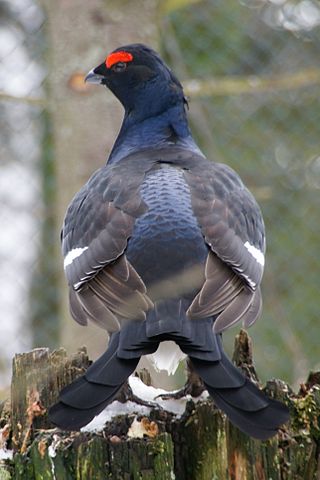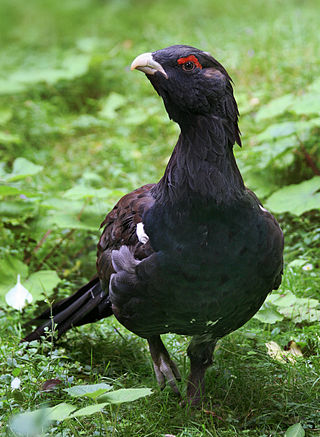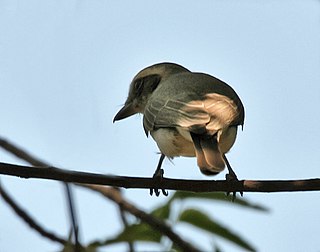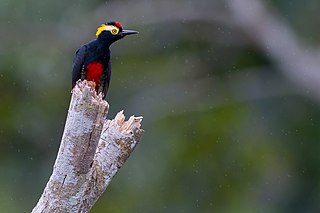
The Phasianidae are a family of heavy, ground-living birds, which includes pheasants, partridges, junglefowl, chickens, turkeys, Old World quail, and peafowl. The family includes many of the most popular gamebirds. The family is a large one and includes 185 species divided into 54 genera. It was formerly broken up into two subfamilies, the Phasianinae and the Perdicinae. However, this treatment is now known to be paraphyletic and polyphyletic, respectively, and more recent evidence supports breaking it up into two subfamilies: Rollulinae and Phasianinae, with the latter containing multiple tribes within two clades. The New World quail (Odontophoridae) and guineafowl (Numididae) were formerly sometimes included in this family, but are now typically placed in families of their own; conversely, grouse and turkeys, formerly often treated as distinct families, are now known to be deeply nested within Phasianidae, so they are now included in the present family.

The black grouse, also known as northern black grouse, Eurasian black grouse, blackgame or blackcock, is a large game bird in the grouse family. It is a sedentary species, spanning across the Palearctic in moorland and steppe habitat when breeding, often near wooded areas. They will spend the winter perched in dense forests, feeding almost exclusively on the needles of conifers. The black grouse is one of two species of grouse in the genus Lyrurus, the other being the lesser-known Caucasian grouse.

The black-backed woodpecker, also known as the Arctic three-toed woodpecker, is a medium-sized woodpecker inhabiting the forests of North America.

Cowbirds are birds belonging to the genus Molothrus in the family Icteridae. They are of New World origin, and are obligate brood parasites, laying their eggs in the nests of other species.

Leiothrix is a genus of passerine birds in the family Leiothrichidae. They belong to a clade also containing at least the liocichlas, barwings, minlas and sibias. The sibias are possibly their closest living relatives.

Melanerpes is a genus of woodpeckers of the family Picidae found in the New World. The 24 members of the genus are mostly colourful birds, conspicuously barred in black and white, with some red and yellow.

Tetrao is a genus of birds in the grouse subfamily known as capercaillies. They are some of the largest living grouse. Feathers from the bird were used to create the characteristic hat of the bersaglieri, an Italian ace infantry formation.

Selasphorus is a genus of hummingbirds from Middle and North America.

Melaenornis is a genus of small passerine birds in the large family Muscicapidae commonly known as the Old World flycatchers. They are restricted to sub-Saharan Africa.

The ground woodpecker is one of only three ground-dwelling woodpeckers in the world. It inhabits rather barren, steep, boulder-strewn slopes in relatively cool hilly and mountainous areas of South Africa, Lesotho and Eswatini and has yet to be recorded outside of Southern Africa. It is found in a broad swath running from southwest to northeast, from the Cape Peninsula and Namaqualand to Mpumalanga. It is closely related to the woodpeckers of the genus Campethera, some of which also employ terrestrial foraging strategies.

Phyllastrephus is a songbird genus in the bulbul family Pycnonotidae. Most of the species in the genus are typical greenbuls, though two are brownbuls, and one is a leaflove.

Fluvicola is a genus of birds in the tyrant flycatcher family Tyrannidae.

The Guianan red cotinga is a species of bird in the family Cotingidae, the cotingas. It is one of two species in the genus Phoenicircus.

Phoenicircus is a genus of birds in the family Cotingidae. They have a bright red breast, crown, tail, and rump with the Guianan species having dark brown wings and the black-necked species having black wings. They are frugivores, eating primarily berries and drupes.

Tephrodornis is a bird genus in the family Vangidae.

The yellow-tufted woodpecker is a species of woodpecker. It is found in Bolivia, Brazil, Colombia, Ecuador, French Guiana, Guyana, Peru, Suriname, and Venezuela. Its natural habitats are subtropical or tropical moist lowland forests and heavily degraded former forest.

Parrotfinches are small, colourful passerine birds belonging to the genus Erythrura in the family Estrildidae, the estrildid finches. They occur from South-east Asia to New Guinea, and many Pacific Islands. They inhabit forest, bamboo thickets and grassland and some can be found in man-made habitats such as farmland, parks and gardens. Several species are commonly kept as cagebirds.

Lessonia is a genus of South American birds in the tyrant flycatcher family, found near freshwater lakes and saline marshes.

The southern red bishop or red bishop is a small passerine bird belonging to the bishop and widowbird genus Euplectes in the weaver family, the Ploceidae. It is common in wetlands and grassland in Africa south of the Equator. North of the Equator, it is replaced by the northern red bishop or orange bishop which was formerly regarded as a subspecies of this species.

The laughingthrushes are a family, Leiothrichidae, of Old World passerine birds. The family contains 133 species which are divided into 16 genera. They are diverse in size and coloration. These are birds of tropical areas, with the greatest variety in Southeast Asia and the Indian subcontinent. The entire family used to be included in the Old World babbler family Timaliidae.
























